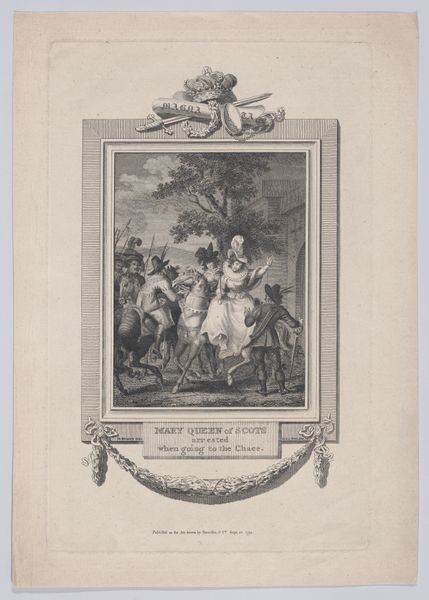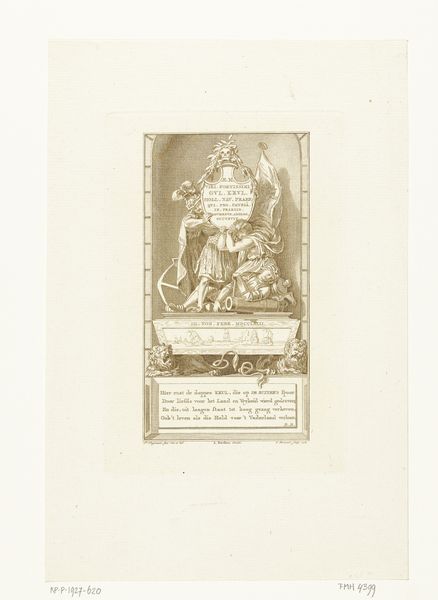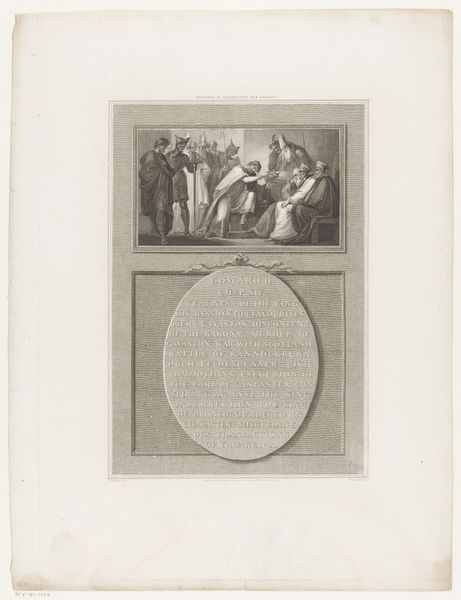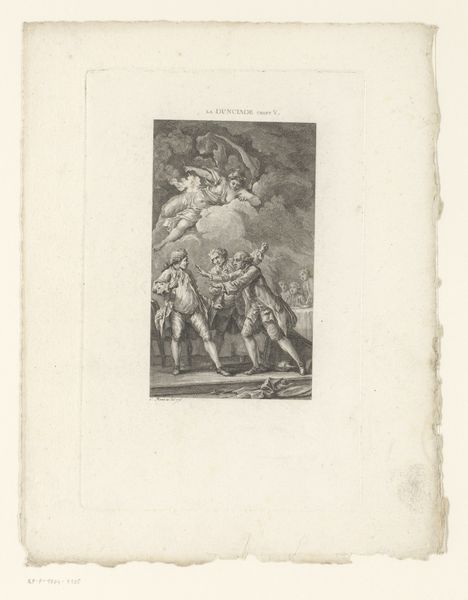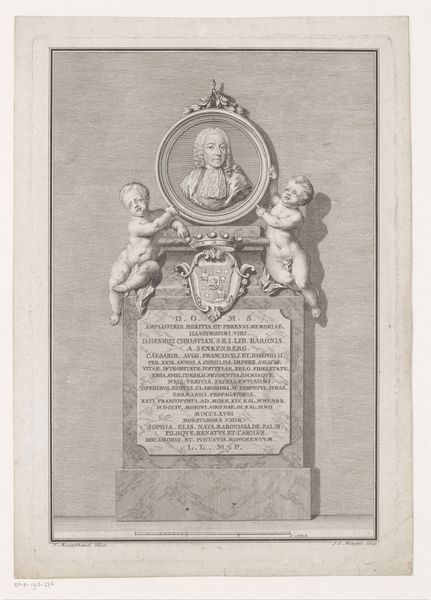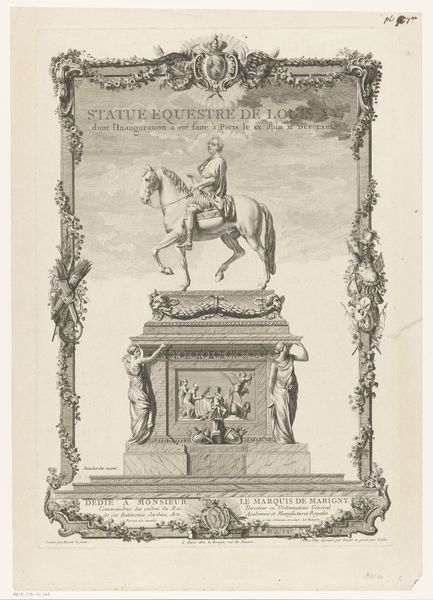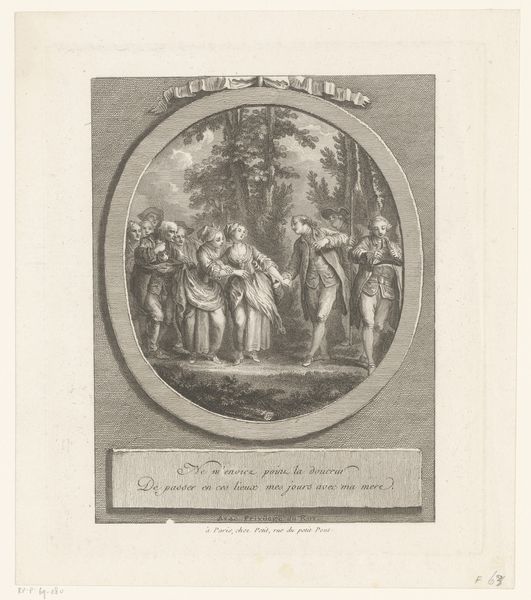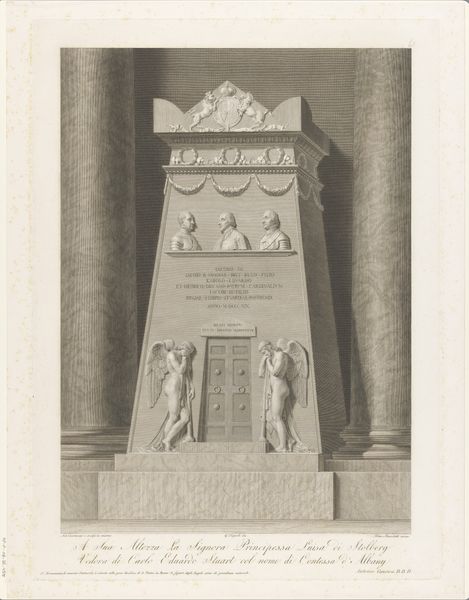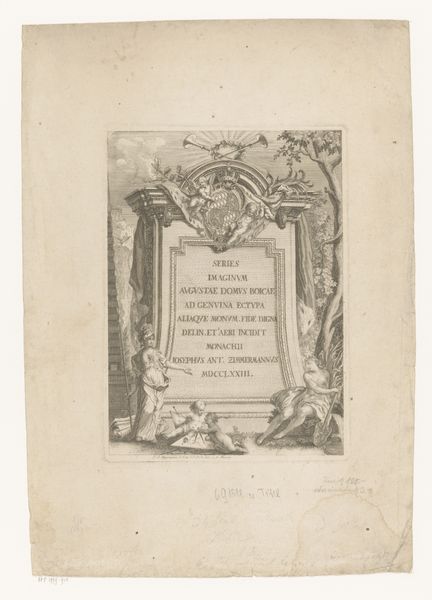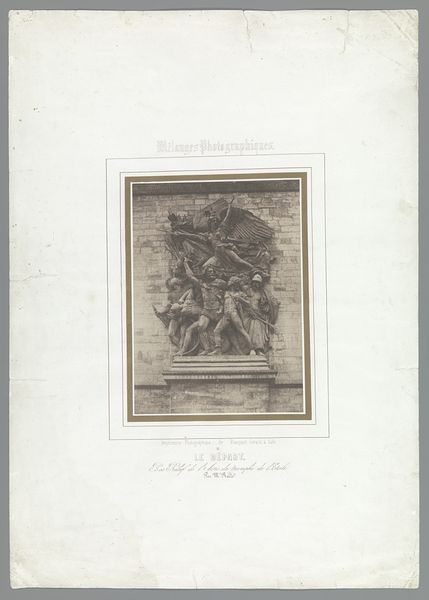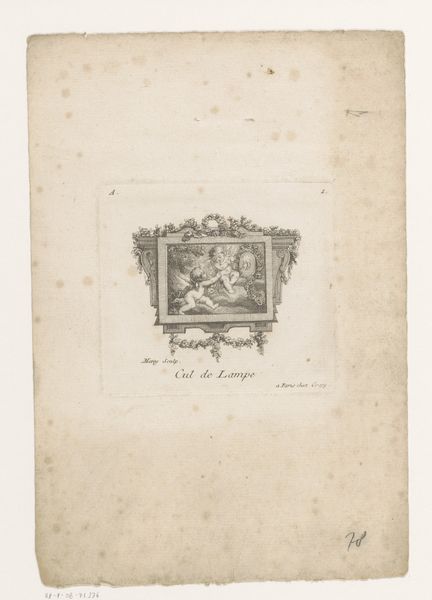
Koning Richard II schorst het duel tussen Thomas de Mowbray en Hendrik IV 1805
0:00
0:00
print, engraving
#
narrative-art
# print
#
figuration
#
romanticism
#
line
#
history-painting
#
engraving
Dimensions: height 318 mm, width 221 mm
Copyright: Rijks Museum: Open Domain
Editor: So, this engraving from 1805 by Jean Marie Delattre is called "King Richard II Suspends the Duel Between Thomas de Mowbray and Henry IV". The scene feels very staged, almost like theatre, despite depicting this dramatic moment. I'm struck by how small the figures are within the frame, lending it a sense of removed observation. What exactly is going on here? Curator: Good observation about the theatrical staging. Delattre is drawing from a historical moment, yes, but within the visual language of Romanticism, prioritizing drama and moralizing narratives. Considering this was created in the early 19th century, during a time of great social upheaval with the French Revolution, consider the impact of these historical narratives on the public's perception of leadership. How do you think an image like this, portraying a king interrupting a duel, might play into contemporary anxieties about power and order? Editor: Well, showing the king halting violence might reinforce his authority, suggesting he’s maintaining peace and preventing chaos. It makes me think about the role of the monarchy. Curator: Exactly. Engravings like this, widely disseminated, contributed to shaping public opinion, even crafting royal 'brands,' you could say. Note how the composition frames Richard II as the central, pivotal figure. Even his hand gesture suggests ultimate control. The architecture behind him further reinforces the notion of divinely sanctioned power. Do you see anything in the written description provided around Richard II that stands out? Editor: The writing details his role in fostering "civil commotion" and "general insurrections", so while he's stopping a duel here, the surrounding text condemns his character, it seems contradictory. Curator: Precisely. There is a sharp distinction between image and text. The artwork captures one frozen moment, but the broader context—revealed by the textual frame—offers a pointed critique, almost a warning against unchecked royal power and the chaos it breeds. Editor: It's like the artist wants us to look beyond the surface of this idealized image and really think critically about the history and role of leadership. I hadn’t picked up on that tension before, it's so interesting. Curator: Indeed, images were never neutral. Studying the cultural context unveils the multiple layers of meaning these artworks carried.
Comments
No comments
Be the first to comment and join the conversation on the ultimate creative platform.
